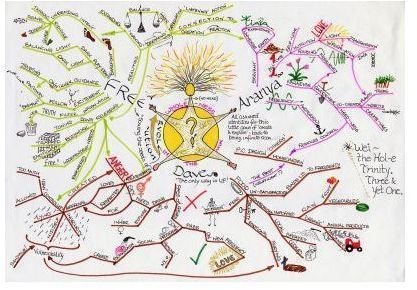Project Management Tips on Mind Mapping Techniques
Introduction
Mind maps help people connect information quickly. Using the mind mapping technique in project management allows a project manager to draw simple pictures that reflect complex ideas. Drawing a mind map typically starts by writing the title of a topic in the center of a whiteboard, piece of paper or software tool. The next step is to write down subtopics and draw lines out from the circle so the project manager can show the connections. He can create additional subtopics to show other important facts. A complete mind map may use different colors, symbols or images.
Defining Project Objectives
A project manager can use a mind map to draw a list of the strategic goals associated with the effort. Then, he should list all the identified resources and their activities. Any tasks that can’t be connected with the strategic goals should be reexamined.
Scheduling Project Tasks
Using the mind mapping technique for project scheduling involves writing down each project task and estimating how long each activity takes to complete. By breaking each task into subtasks, a project manager can more accurately draw a picture that reflects the precise actions and how long each task actually takes. Mind mapping can help a project manager show the project activity dependencies as well. Project managers can use mind maps to schedule tasks and allow for contingencies.
Solving Problems
Project managers and teams frequently encounter complex problems. Team building exercises involving generating mind maps can help generate troubleshooting procedures, make decisions based on available data or determine the root cause of a production issue. For example, a project team faced with the challenge of budget reductions can list the remaining activities and propose less expensive alternatives. Mind mapping works well for teams conducting brainstorming sessions.
Documenting Meetings
Project managers acting as meeting facilitators can draw a mind map to document all topics discussed in team meetings. The resulting visual image often triggers creative thinking. For example, listing questions about the scope of the project, unresolved problems or expertise lacking to complete a project task can serve as an effective visual status report.
Structuring Project Archives
Faced with information overload, many project managers lose track of project documents, such as functional requirements, project plans and risk registers. By creating a mind map to reflect the current project team’s information retrieval needs, the project manager can then set up a folder structure in a collaborative environment, such as a Microsoft Sharepoint site, that team members will really use, complete with links and filters.
Conclusion
The mind mapping technique can be used as a powerful, creative and productive way to manage projects, structure and categorize complex information, and provide interesting reports that catch people’s attention. By minimizing words and focusing on relationships, mind maps allow project managers and team members to quickly see dependencies and problems, saving time and money. Using mind maps can significantly improve a project team’s productivity.
Resources and Image Credit
- Image Credit: Guru Mindmap (https://commons.wikimedia.org/wiki/File:Guru_Mindmap.jpg)
- “Innovation Tools.” Innovation Tools. https://www.innovationtools.com/Articles/ArticleDetails.asp?a=148 (accessed October 22, 2010).
- “Learn how to draw Mind Maps - MindMaps, Note Taking Skills and Techniques, and Reviews of Mind Mapping Software from MindTools.com.” Mind Tools - Management Training, Leadership Training and Career Training - Right Here, Right Now.. https://www.mindtools.com/pages/article/newISS_01.htm (accessed October 22, 2010).
- “SmartDraw.” SmartDraw. https://www.smartdraw.com/ (accessed October 22, 2010).
- “ThinkBuzan - Official Mind Mapping software by Tony Buzan.” ThinkBuzan - Official Mind Mapping software by Tony Buzan. https://www.thinkbuzan.com/uk/home (accessed October 22, 2010).
